ביקורת ספרותית על השירים “בַּת הַחַיִּים”, “כֶּתֶר שֶׁל חַיִּים”
והשוואה בין השירים מאת: פרנצ’סקה גללו גבריאל איטלו נל גומז
Literary Criticism of the Two Poems” The Daughter of the Living
The Girl of the Flower of Life; Iris“, “Crown of Life”
and a Comparison of the Poems by: Francesca Gallello Gabriel Italo Nel Gòmez
ציורים בשילוב צילומים: האמנית הבינלאומית זהבה נטר (נטע)-ישראל
paintings combined with photographs by the international artist Zehava Neter
בְּגַן עֵדֶן עוֹלָמוֹת עוֹלָמִים
בַּת פֶּרַח הַחַיִּים; הָאִירִיס הָאֱנוֹשִׁית-איריס כליף
בַּת הַחַיִּים –איריס כליף -ישראל
טָמִיר וְנֶעֱלָם בּוֹרֵא לְזֵפִיר רְקִיעִים בְּאוֹר עוֹלָם פּוֹדֶה מַעְיָנוֹת שֵׁמוֹת חַיִּים
הִנְּךָ עֻזִּי וּבְצַלְמִי כִּירֵחַ הָאָדָם יְשׁוּעוֹת
הִנְנִי הָאִירִיס בַּת הַחַיִּים עֵירֻמָּה בְּפָנֵי הַחוֹלוֹת מוֹלֶכֶת מְרוֹמִים
קוֹשֶׁטֶת בְּחֹם זָהָב רוּחַ טִפּוֹת יְרָחִים
שֶׁמֶשׁ בְּעָבִים קַרְנֶיהָ נוֹוְדוֹת גּוּפִי כִּבְעֵרוֹת לַחֹשֶׁךְ הַקָּמֵר
הַלַּיִל לֵב רוֹקֵם מְפַעֵם בְּחַי הֶהָרִים חֶסֶד לַחֲנֵי בַּת פֶּרַח הַחַיִּים; הָאִירִיס הָאֱנוֹשִׁית
וּבְשַׁעַר אֲדָמָה יוֹסֵד בִּי גַּבְרִיאֵל מִקְדָּשׁ בַּיִת עוֹלָמִים
וּבְשֶׁלֶג יָמִים דֹּם נְשִׁימָתִי כּוֹרַעַת בְּאוֹר נְבִיאִים
הַשַּׁחַר נוֹגֵעַ נוֹשֵׁק בְּדָמִי אָדָם
וּבְצַלְמֵי נְשָׁמָה טָמִיר וְנֶעֱלָם
בְּרֵאשִׁית מִדְבָּר
מְקַדֵּשׁ כְּתוּבֵי עוֹלָם
בְּקוֹל תְּהִלִּים
בּוֹרֵא אֱנוֹשׁ
חַוָּה
בַּת אַהֲבָה
בַּת אֱלֹהִים
בַּת הַחַיִּים
מהספר “בת אלוהים ” כל הזכויות שמורות לאיריס כליף ©️
ביקורת ספרותית וניתוח של השיר “בת החיים” מאת: פרנצ’סקה גללו גבריאל איטלו נל גומז ©️
השיר “בת החיים” חוקר נושאים עמוקים הקשורים לרוחניות, חיים ומוות, כמו גם לקשר בין הפרט לבין היקום. המשוררת מציגה את עצמה כדמות סמלית, “בת החיים”, אשר מתקשרת עם מושגים מופשטים כגון מוות, אור ואמונה. איריס כליף שוזרת את זהותה עם זו של פרח האיריס, סמל של יופי וטוהר, אך גם של סבל והתגלות, במשחק מתמשך בין חיים ומוות. הבחירה להשתמש בדמות האיריס כמטאפורה מרכזית היא משמעותית במיוחד. האיריס הוא פרח המעורר עדינות אך גם את חוזקה של נשמה המתמודדת עם קיומה וסתירותיה. המשוררת רואה את עצמה כגשר בין עולמות עליונים לעולם הארצי, בין אור לחושך. האיריס הוא בו-זמנית סמל לאלוהות ולשבריריות האנושית, פרח שצומח בין המוות לחיים, בדיוק כמו המשוררת עצמה, המחפשת גאולה וטוהר בתוך הכאוס של העולם.
שפת השיר חגיגית, כמעט מיסטית, עם מטען סמלי חזק. . הדימויים המעוררים (“אבן המוות”, “הר חסד חיים”) מעבירים תחושה של קדושה והתעלות. המשוררת משתמשת בכתיבה המתנודדת בין הלירי לפילוסופי, משלבת אלמנטים דתיים ורוחניים עם שפת הגוף והטבע מבנה השיר זורם, אינו קשור בתבניות נוקשות. זה מעניק לכתיבה תחושה של חופש וזרימה, כאילו המשוררת מביעה מונולוג פנימי ללא מגבלות פורמליות. החזרות והביטויים הזורמים לכאורה באופן חופשי חושפים את עוצמת התהליך המדיטטיבי והרצון לשינוי פנימי.
השיר “כֶּתֶר שֶׁל חַיִּים” מאת -איריס כליף -ישראל
כֶּתֶר חַיִּים – איריס כליף – ישראל
גּוּפִי
אִיריס פרח עוֹלָם; יַלְדָּה אִשָּׁה עוֹלָם הַכָּרוּעַ כַּנְפֵי חַיִּין מִיתָה וֶאֱהָבִין
אֲנִי בָּלַט הָאִירוּס הַדּוֹמַעַת בְּאֶבֶן הַמָּוֶת אֶל מוּל הַר הַחַיִּים ,בְּחֶסֶד שֶׁבֶר תִּקּוּן הַנֶּפֶשׁ הֲזֻכַּכְתָּ הָרוֹגֶשֶׁת בְּפִיּוּט הַנְּשָׁמָה ,הַחוֹלֶמֶת הַמְּיַחֶלֶת הַשְּׁבוּיָה אַהֲבָה
הַטּוֹבַעַת אֵל גּוּפִי אֶל מוּל הַהַלְקָאָה, הַתְּהוֹם הַפַּחַד וְהַיִּסּוּר הָאֱנוֹשִׁיִּים
אָנוֹרֶקְסִיָּה
מַלְכוּת הַחַיִּים שֶׁל הַמָּוֶת בִּגְלִימָתוֹ וְהִתְגַּלְּמוּתוֹ
אַתְּ הָאָנוֹרֶקְסִיָּה,
חֶבְרַת הַנֶּפֶשׁ שֶׁלִּי הָאוֹחֶזֶת וְהַנּוֹשֶׁמֶת בִּי נֶצַח אוֹיֶבֶת נָשַׁמְתִּי הַהֶרֶס הַבְּרִיחָה הַהַלְקָאָה הַפַּחַד הַבִּטָּחוֹן הַשְּׁלִיטָה הַהִתְפָּרְקוּת הַיִּסּוּר הַהִטַּהֲרוּת מֵעַצְמִי וּמִיְּצָרַי אֱנוֹשׁ עוֹלָם. אֲנִי שׁוֹאֶלֶת וּמַבִּיטָה לְרוּחַ נַפְשִׁי הַפּוֹסַעַת כְּאֵב אַהֲבָה פַּחַד כְּמִיהָה הֶרֶס שֶׁבְּרִירִיּוֹת עוֹצְמָהּ וְנָשִׁיּוּת, זְכוּת תַּמָּה שֶׁל יַלְדָּה אֲבוּדָה אַךְ אוֹהֶבֶת ,יַלְדָּה אִשָּׁה הַשּׁוֹפַעַת קִיּוּם בְּסוֹפָהּ שֶׁל מִיתָה וְחַיִּים בְּגוּף אֶחָד אוֹהֵב שׁוֹקֵק וּמְיֻסָּר רֶגֶשׁ קוֹלִין הַמְּחֻלִּין הָעוֹלֶה וְהַמֵּאִיר בִּפְעִימַת לִבִּי וְנָשַׁמְתִּי הוּא לַעֲצֹם עֵינַי הַשּׁוֹקְטוֹת . עֵינַי הַיְּרֹקֶת מֵחַיִּים
וּמִגֶּשֶׁם רַעַם בַּרְקָא יַרְחָא וְשִׁמְשָׁא עוֹלָמוֹת אֲנִי נוֹשֶׁמֶת גּוּפִי עָמֹק לִשְׁנוֹתַי הַבּוּכְיוֹת וְחוֹלֶמֶת
בְּכֶתֶר שֶׁל חַיִּים
חַיּוֹתַי הַמְּרֻקֶּדֶת הַצּוֹמַחַת וְהַמְּחוֹלֶלֶת
כְּפֶרַח בָּלַט אִירוּס בְּרִיאָה
מספרי הרביעי שבכתובים ‘כל הזכויות שמורת ‘©
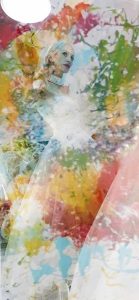
ביקורת ספרותית וניתוח של השיר “כתר החיים” מאת: פרנצ’סקה גללו גבריאל איטלו נל גומז ©️
השיר “כתר החיים” ממשיך את ההרהור על החיים, המוות והמאבק הפנימי, אך הפעם הדגש הוא על הסבל הפיזי והרגשי של המחברת, במיוחד ביחס לניסיונה עם אנורקסיה. המחברת מתמודדת עם זהותה דרך המאבק נגד המחלה והחיפוש אחר ישועה. “כתר החיים” אינו רק סמל לניצחון, אלא גם מטרה רוחנית להשגה, הכרה עצמית דרך סבל ולידה מחדש. הנושא המרכזי סובב סביב המאבק למען החיים, הבריאות והגאולה. הגוף האנושי מטופל כשדה קרב בין המוות (המיוצג על ידי האנורקסיה) לבין החיים, אך גם כמקדש של יופי וטוהר. המשוררת מבקשת לחבק את קיומה ואת גופה כמעשה של שחרור מכאב והרס פנימי.
סגנון השיר הזה ישיר עוד יותר מהקודם, עם שפה המתחככת בקו שבין הלירי לווידויי. התמונות חזקות ועוצמתיות, כמו “מות האוהבים” או “אינסטינקט הגשם”, היוצרות קשר חזק בין סבל פיזי לסבל רגשי. השפה גם עמוסה בסמליות, אך במקרה זה, היא ממוקדת יותר בחוויה הארצית של המשוררת, בתפיסתה את הגוף והנשמה.שוב, המבנה חופשי, אך העוצמה הרגשית של כל בית מורגשת. השימוש בדימויים חזותיים ופיזיים, כמו “נשימה אינסופית” ו”גשם”, עוזר להחיות תחושה של דיכוי, שאחריה באה שחרור. דרך כתיבה זו מרגישה כזעקה אילמת , כאילו כל מילה היא מאבק להתגלות ולשרוד……
השוואה בין השירים “בת חיים” ו-“כתר של חיים” – פרנצ’סקה גללו גבריאל איטלו נל גומז ©️
כאשר משווים את שני השירים, אני יכולה לומר שלמרות שהם עוסקים בנושאים דומים, הם שונים בגישה ובפרספקטיבה. “בת החיים” הוא יותר מיסטי, מתמקד ביחסים בין הפרט לבין היקום, האור המוות, והרוח שמתעלה מעל הגוף. זהו שיר המעורר תחושה של טוהר וקשר רוחני עמוק לעומת זאת, “כתר החיים” הוא הרבה יותר אישי ודרמטי. הוא מתמקד במאבק של המחברת באנורקסיה וברצונה להתפייס עם עצמה ועם גופה. בעוד ש”בת החיים” יכול להיחשב כהמנון לרוחניות וליופי האוניברסלי, “כתר החיים” הוא מעשה של התנגדות, אישור של החיים למרות הכאב.
בשני השירים, עם זאת, איריס כליף משתמשת בגוף כסמל מרכזי. בשיר הראשון, הגוף הוא מקום הטיהור והחיבור עם האלוהי, בעוד שבשיר השני, הגוף הוא שדה הקרב לחיים ולמוות, שבו המשוררת מתמודדת עם שבריריותה וחוזקתה. סגנון השירה של איריס כליף ספוג ברוחניות, בהתבוננות פנימית ובתחושה חזקה של סמליות. שיריה מאופיינים בשפה לירית שנעה בין המיסטי לאישי, ובמבנה המאפשר לשירה לזרום בחופשיות, ללא האילוצים של הצורה הקלאסית. זה מאפשר לה לחקור נושאים עמוקים כמו מוות, חיים, סבל וישועה בדרך אינטנסיבית ומיידית. איריס משתמשת בסמלים חזקים כמו פרח האיריס, אור, מוות, אנורקסיה והגוף, שהופכים לכלים לחקירת חיפושה אחר העצמי, יחסיה עם האלוהי וגופה. המשוררת אינה נרתעת מהכאב אלא הופכת אותו למעשה של התנגדות ולידה מחדש.
כתיבתה היא הזמנה להרהר על יופי הקיום והאתגרים שהחיים מציבים. איריס כליף מצליחה לפייס בין הקודש לחול, הגבוה והנמוך, ויוצרת שירה שהיא גם אוניברסלית וגם אישית מאוד. סגנון השירה של איריס כליף, עם המיסטיקה העמוקה שלה, החיפוש אחר משמעות רוחנית והקשר בין גוף ונשמה, מזכיר חלק מהדמויות האייקוניות ביותר בשירה הלירית והסימבוליסטית. אם הייתי צריכה להשוות אותה למשוררת מפורסמת,הייתי אומרת שסגנונה חולק דמיון עם ריינר מריה רילקה ואמילי דיקינסון. רילקה הידוע ביכולתו לחקור בדידות, את מסתורין החיים והמוות, ואת החיפוש אחר משמעות עמוקה יותר בקיום. שירתו מלאה בדימויים סמליים ומטאפורות, דומים לאלה שאיריס כליף משתמשת בהם כדי לחקור נושאים כמו רוחניות והיחסים בין הנשמה לגוף. שני המשוררים משתמשים בשפה עשירה ומעוררת המזמינה את הקורא להרהר בשאלות קיומיות, הקשורות לעתים קרובות לאלוהי ולאינסופי. כמו רילקה, איריס כליף עושה שימוש נרחב בסמלים טבעיים, כמו פרח האיריס, כדי לבטא מושגים אוניברסליים ורוחניים
איריס כליף חולקת גם זיקה מסוימת עם אמילי דיקינסון, במיוחד ביכולתה לעסוק בנושאי מוות, אהבה ובדידות בשפה תמציתית אך רבת עוצמה. שירתה של דיקינסון מאופיינת לעתים קרובות בהתבוננות פנימית עמוקה ובמתח בין הקודש לחול, תכונות שנמצאות גם בשירתה של איריס. שתי המשוררות נראות חוקרות את נשמתן עם מרכיב חזק של מאבק פנימי וקשר עמוק לאלוהי, אם כי בדרך אישית וייחודית. בנוסף, מכיוון שאיריס כליף היא ממוצא ישראלי ויש לה קשר חזק למסורת הקבלית והמיסטית, ניתן לראות את עבודתה כצומת בין שירה מיסטית יהודית (כמו זו של אברהם יהושע השל או חיים נחמן ביאליק) לבין משוררים מודרניים יותר. חקירתה את הממדים הרוחניים והאלוהיים בחיי היומיום וחיפושה אחר אמיתות אוניברסליות דרך סבל ויופי מעוררים מסורת מסוימת של משוררים המחפשים קשר עם האינסופי.
אילו הייתי צריך לבחור שם להשוות את סגנון השירה של איריס כליף, הייתי מחדשת את מחשבתי ואומרת שהוא דומה מאוד לריינר מריה רילקה ואמילי דיקינסון, עם נגיעה של מיסטיקה שיכולה גם לשאוב ממסורת השירה המיסטית היהודית. יכולתה לשזור רוחניות, סבל ויופי אוניברסלי יוצרת שירה שחוצה את הזמן ומזמינה להרהור עמוק. איריס כליף היא משוררת טהורה, אור המשתמש במילים כמו בשם לנשמה.
כל הזכויות שמורות לפרנצ’סקה גללו גבריאל איטלו נל גומז ©️
אודות פרנצ’סקה גללו – איטליה
פרנצ’סקה גללו (צ’ירו מרינה קר קלבריה) היא סופרת, משוררת, מבקרת ספרותית עיתונאית ועורכת איטלקייה. היא סיימה את לימודיה בחקלאות ולאחר מכן בספרות. היא כתבה את הרומן הראשון שלה בגיל 9.פרנצ’סקה כתבה ספרים ושירים רבים שתורגמו ופורסמו במדינות שונות ברחבי העולם וזכתה במספר פרסים והכרה בינלאומית.היא המנהלת של הוצאת “ולירו” Veliero”” ומנהלת של המגזין המקוון הבינלאומי “סאטורנו” SATURNO”“,מגזין שבו היא נותנת מקום לסופרים מכל העולם.היא נלהבת לכתוב ולקרוא ומאוד אוהבת לבשל ומנהלת בלוג בישול ששמו “טעמים, ההנאה שבבישול”. סגנונה הפיוטי מוגדר כגלאליאני על ידי גדולי התרבות הבינלאומית ומשמש כמדריך למחקרים וחקר השפה הפואטית.
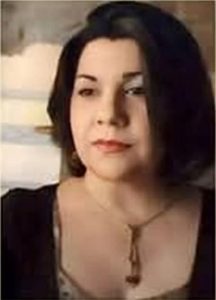
אודות איריס כליף –ישראל
איריס כליף נולדה ומתגוררת בישראל ,היא סופרת ומשוררת בינלאומית, רקדנית, עיתונאית, חברה באגודת הסופרים והסופרות העבריים בישראל ובאקו”ם.איריס מתרגמת ועורכת לעברית שירה אוניברסלית חובקת עולם. היא מתרגמת ועורכת שירה במגזין המקוון לתרבות, ספרות, אומנות ושירה “בכיוון הרוח”, עורכת אנתולוגיות בינלאומיות של המגזין ואחראית על קשריי החוץ במגזין. עורכת ומתרגמת שירה אוניברסלית במגזין לתרבות, אומנות ולייף סטייל “MOKASINI” -‘מוקסיני’, ועורכת ומתרגמת במדור ‘שירה עולמית’ באתר הספרות ‘חדרים’.
איריס היא הזוכה של הפרס הבינלאומי לספרות איטליה -מילאנו 2024: ‘CITY OF GALATEO‘פרס מיוחד למצוינות צ’יטה דל גלטאו בקטגוריה של סופרים זרים מרחבי העולם, שירה וסיפורת בנושא חופשי, עבור השיר שכתבה “מלאך חיים”.הזוכה של פרס המשורר הבינלאומי הטוב ביותר לשנת 2023 מטעם המרכז לחקר תרבות ושירה IPTRC–CHINH סין, מהדורה מעורבת של מגזין תרגום שירה ומחקר בינלאומי של מועצת איחוד הפיוט העולמי –CHINH-סין
נבחרה לאחת מ-“20 העיתונאים הבינלאומיים המובילים לשנת 2024 של Legacy Crown’s “כתר מורשת“–ASIA-אסיה . היא בעלת דיפלומה מאיגוד הסופרים המקצועי הרוסי והמגזין הבינלאומי ארינה NN הרשום במשרד התרבות של רוסיה על תרומתה לתרבות העולם “קהילה פואטית בינלאומית” 2022. היא ראש מחלקת הקישור הישראלי של מגזין הספרות והאומנויות הונג קונג-CHINH סין וחברה באיגוד האמנים והסופרים העולמי SAPS, מכהנת כחברה במערכת שנתון השירה העולמית 2024 [מהדורה אנגלית] English edition World Poetry Yearbook 2024ובעלת תואר ד”ר לשם כבוד מהפורום הבינלאומי ליצירתיות, אנושיות ודו קיום ממלכת מרוקו.
ראו אור שלושת ספריה -“בשביל קסום נושפת לוליטה”/ 2001.”ירח בר”/ 2017 .”בת אלוהים”/ 2020 ובימים אלו היא עובדת על ספרה הרביעי והחמישי. שיריה פורסמו והוקראו ברדיו, בטלוויזיה, בכתבי עת ארציים ובינלאומיים, אנתולוגיות בארץ ובחו”ל, אתרים ספרותיים ברחבי העולם, באינטרנט, מגזינים ועיתונים בינלאומיים רבים ותורגמו ע”י משוררים בינלאומיים ממדינות שונות ברחבי העולם למגוון של שפות זרות ,ספרדית, בנגלית, ערבית, נפאלית, סינית, טורקית, אסמית, רוסית, אלבנית איטלקית .רבים משיריה ומתרגומיה של איריס לשריהם של משוררים בינלאומיים לשפה העברית הוצגו בתערוכות רבות יוקרתיות, ייחודיות ובינלאומיות בישראל אחת מהן היא התערוכה המפורסמת “פרפרים של שלום” -שהוצגה ביוני 2024 תערוכה שאיריס הציגה 26 משיריה ומשיריהם של 21 משוררים בינלאומיים ידועים ממדינות שונות ברחבי העולם שתרגמה וערכה לעברית וארבעה משיריה שתורגמו ע”י משוררים בינלאומיים לסינית, איטלקית, ספרדית וערבית.
איריס היא צאצאית לשושלת מקובלים, התברכה בנבואת רוח הלב וביכולת של תקשור וחיזיון, שבאים לידי ביטויי בכתיבתה המיסטית והקבליסטית שניחנה בנגיעות רוחניות של קודש עולמות עליונים ונסתר. איריס: עבור נשמתי זוהי ברכת עולם להאיר ברוח הקול היהודי מעמוק האהבה, החיים והאמונה בבורא עולם-אבינו שבשמיים .איריס: שירתי משקפת את מסעי הפנימי של נפשי המביטה אהבה, החולמת חיים והמנשמת מחול עולמות קודש בריאה ונסתר ומהווה סמל וביטוי לניצחוני על מחלת האנורקסיה ובחירתי חיים ואהבה; “וּבְחַי קוֹל מְחוֹלַ אֱלֹהֵי הָאִירִיס; אִירִיסִים שֶׁל שָׁמַיִם כְּחֻלִּים כְּפֶרַח חַיִּים אֱנוֹשִׁי”
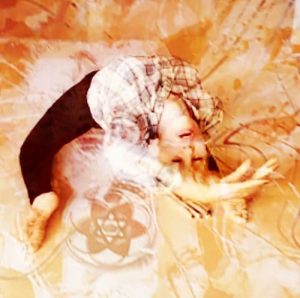
אודות האמנית הבינלאומית זהבה נטר -ישראל
זהבה נטר, אחותה הבכורה של איריס כליף, היא ציירת ואומנית בינלאומית רב-תחומית של רגש, מתקשרת וכציירת אינטואיטיבית מקשרת בין כישרונותיה ומחפשת תדיר את הקשר בין הרוחני לאומנותי בחייה. היא חברה באגודת הציירים והפסלים הארצית, בוגרת המדרשה לאומנות, קלמניה, בית ברל. היא אצרה תערוכות רבות , השתתפה בתערוכות יחיד, קבוצתיות ובפסטיבלים ברחבי הארץ. יצירותיה מוצגות באוספים פרטיים שונים ובמגזינים ברחבי העולם.
כל הציורים המשולבים בצילומים שמוצגים בכתבה הם פרי יצירותיה של האמנית זהבה נטר.
בעבודות מופיעה אחותה המשוררת איריס כליף
A Daughter of the Flower of Living; The Human Flower Iris
In the Garden of Heaven Worlds
“The Daughter of the Living
The Girl of the Flower of Life; Iris”
Iris Calif ©️
THE DAUGHTER OF THE LIVINNG -IRIS CALIF
God creates the heavens
Of the spirit in the light of the world
Springs with the authentic names of life
You are my halo strength
In my image the moon;
Man’s salvation.
Behold, I am the Iris; the daughter of the living
Naked in sight of the sands of the kingdom of above
Adorned with gold and drops of moon light.
The sun in the clouds, and the rays wanders
My body like the burning of the darkness of the Arch,
The heart of the night, weaves,
Beats in the mountains to the grace of The Human Iris flower
And at the gate of the earth, Gabriel.
The temple house of the dead,
Was founded in me
And the snowy days of the blood of my soul.
Kneels in the light of the prophets
Down touches a human
Blooded kiss,
And in the image of the soul of God,
Our father in heaven,
In the beginning of the wilderness.
Temple of the scriptures of the world
In the voice of psalms, creator of the human
Eve
Daughter of love, Daughter of God
A girl of life
From the book “Daughter of God“
“All the rights reserved to Iris Calif” ©️
LITERARY CRITICISM AND ANALYSIS OF THE POEM “THE DAUGHTER OF THE LIVING” by: Francesca Gallello Gabriel Italo Nel Gòmez
The poem “The Daughter of the Living” explores profound themes related to spirituality, life, and death, as well as the connection between the individual and the universe. The poetess presents herself as a symbolic figure, the “daughter of the living,” who interacts with abstract concepts such as death, light, and faith. Iris Calif weaves her identity with that of the Iris flower, a symbol of beauty and purity, but also of suffering and revelation, in a continuous play between life and death. The choice to use the figure of the Iris as a central metaphor is particularly significant. The Iris is a flower that evokes delicacy but also the strength of a soul confronting its own existence and contradictions. The poetess sees herself as a bridge between higher worlds and the earthly world, between light and darkness. The Iris is simultaneously a symbol of divinity and human fragility, a flower that grows between death and life, much like the poetess herself, who seeks redemption and purity amidst the chaos of the world.
The language of the poem is solemn, almost mystical, with a strong symbolic charge. The evocative images (“the stone of death,” “the mountain of living grace”) convey a sense of sanctity and transcendence. The poetess uses writing that oscillates between the lyrical and the philosophical, blending religious and spiritual elements with the language of the body and nature.
The structure of the poem is fluid, not bound by rigid patterns. This gives the writing a sense of freedom and flow, as if the poetess is expressing an inner monologue without formal limitations. The repetitions and seemingly free-flowing phrases reveal the intensity
of the meditative process and the desire for inner transformation.
“All rights reserved to Francesca Gallello Gabriel Italo Nel Gòmez” ©️
CROWN OF LIFE – IRIS CALIF
My body is carried as heaven worlds, kneels his spirit in front of the Wings of the land of death, the land of living and the land of love
And I am the human flower Iris draping my tears in the stone of death in Front of the living Grace Mountain of my purified broken soul that blowing Her Breaths in my Piot mysteries prayer of my dreaming Iris soul to the Living
The flower Iris a universe,
A girl, a woman, kneeling to wings of life, to my body
Death of lovers, Anorexia;
The kingdom of the life and death personification:
You the Anorexia
My spiritual soul friend grasping me,
And breathing me with infinity: Death
My soul, foe my escape from my destruction,
My flogging, my Awe
My dismantle of my faith, my trust my security, my purification
From rain instinct, of my own self, and from human Inclination.
I ask and look at my soul, my grief, my fear, my destruction,
Yet yearning to strength, of feminine power, a pour loving and longing of A girl,
Woman for life within her, a body healthy and sound,
To close my green living eyes, with rain, thunder in the lighting moon,
And the sun of the worlds. my body breathes deeply in my weeping Years.
And in my weeping years, I am dreaming the crown of life
The living dancing vitality that grows and sinks In my body and soul,
And me, the human Iris flower of the creation standing out healthy
Covering my spirit soul of my naked body to the
Crown of life
“All the rights reserved to Iris Calif” ©️
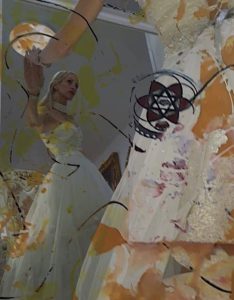
LITERARY CRITICISM AND ANALYSIS OF THE POEM “CROWN OF LIFE”
by: Francesca Gallello Gabriel Italo Nel Gòmez©️
The poem “Crown of Life” continues the reflection on life, death, and inner struggle, but this time the focus is on the physical and emotional suffering of the author, especially in relation to her experience with anorexia. The author confronts her identity through the battle against the illness and the search for salvation. The “crown of life” is not only a symbol of triumph but also a spiritual goal to be reached, a self-recognition through suffering and rebirth. The central theme revolves around the fight for life, health, and redemption. The human body is treated as a battlefield between death (represented by anorexia) and life, but also as a temple of beauty and purity. The poetess seeks to embrace her existence and her body as an act of liberation from pain and inner destruction.
The style of this poem is even more direct than the previous one, with a language that brushes the line between the lyrical and the confessional. The images are strong and powerful, such as the “death of lovers” or the “rain instinct,” which create a strong connection between physical and emotional suffering. The language is also rich in symbolism, but in this case, it is more focused on the poetess’s earthly experience, on her perception of the body and soul.
Again, the structure is free, but the emotional intensity of each stanza is palpable. The use of visual and physical imagery, such as the “infinite breath” and the “rain,” helps bring to life a sense of oppression, followed by liberation. This way of writing feels like a
silent scream, as if each word were a struggle to emerge and survive.
COMPARING THE TWO POEMS by: Francesca Gallello Gabriel Italo Nel
Gòmez©️
When comparing the two poems, I can say that although they deal with similar themes, they differ in approach and perspective. “The Daughter of the Living” is more mystical, focusing on the relationship between the individual and the universe, light and death, and the spirit that transcends the body. It is a poem that evokes a sense of purity and deep spiritual connection.
In contrast, “Crown of Life” is much more personal and dramatic. It focuses on the author’s battle with anorexia and her desire to reconcile with herself and her body. While “The Daughter of the Living” can be seen as a hymn to spirituality and universal beauty, “Crown of Life” is an act of resistance, an affirmation of life despite the pain.
In both poems, however, Iris Calif uses the body as a central symbol. In the first poem, the body is the place of purification and connection with the divine, while in the second poem, the body is the battleground for life and death, where the poetess confronts her fragility and strength. Iris Calif’s poetic style is infused with spirituality, introspection, and a strong sense of symbolism. Her poems are characterized by a lyrical language that moves between the mystical and the personal, and by a structure that allows the poetry to flow freely, without the constraints of classical form. This enables her to explore deep themes such as death, life, suffering, and salvation in an intense and immediate way. Iris uses powerful symbols such as the Iris flower, light, death, anorexia, and the body, which become tools for exploring her search for self, her relationship with the divine, and her body. The poetess does not shy away from pain but transforms it into an act of resistance and rebirth.
Her writing is an invitation to reflect on the beauty of existence and the challenges life presents. Iris Calif manages to reconcile the sacred and the profane, the high and the low, creating a poetry that is both universal and deeply personal. Iris Calif’s poetic style, with its deep mysticism, the search for spiritual meaning, and the connection between body and soul, is reminiscent of some of the most iconic figures in lyric and symbolist poetry. If I were to compare her to a famous poet, I would say her style shares similarities with Rainer Maria Rilke and Emily Dickinson. Rilke is known for his ability to explore solitude, the mystery of life and death, and the search for a deeper meaning in existence. His poetry is full of symbolic images and metaphors, similar to those that Iris Calif uses to explore themes such as spirituality and the relationship between the soul and the body. Both poets use rich and evocative language that invites the reader to reflect on existential questions, often linked to the divine and the infinite. Like Rilke, Iris Calif makes extensive use of natural symbols, such as the Iris flower, to express universal and spiritual concepts.
Iris Calif also shares a certain affinity with Emily Dickinson, especially in her ability to address themes of death, love, and solitude with concise but powerful language. Dickinson’s poetry is often characterized by deep introspection and a tension between the sacred and the profane, qualities that are found in Iris’ poetry as well. Both poets seem to explore their own souls with a strong component of inner struggle and a deep connection to the divine, though in a personal and unique way. Additionally, since Iris Calif is of Israeli origin and has a strong connection to the Kabbalistic and mystical tradition, her work could be seen as a crossroads between Jewish mystical poetry (such as that of Abraham Joshua Heschel or Hayim Nahman Bialik) and more modern poets. Her exploration of the spiritual and divine dimensions in everyday life and her search for universal truths through suffering and beauty evoke a certain tradition of poets seeking connection with the infinite.
If I had to choose a name to compare Iris Calif’s poetic style to, I would renew my thought and say that it closely resembles Rainer Maria Rilke and Emily Dickinson, with a touch of mysticism that can also draw from the tradition of Jewish mystical poetry. Her ability to intertwine spirituality, suffering, and universal beauty creates poetry that transcends time and invites deep reflection. Iris Calif is a pure poetess, a light who uses words as a balm for the soul.
“All rights reserved to Francesca Gallello Gabriel Italo Nel Gòmez” ©️
About FRANCESCA GALLELLO – ITALY
Francesca Gallello (Cirò Marina KR Calabria) is an Italian writer, poet, journalist, editor. She completed her studies in agriculture and subsequently in literature. She wrote her first novel at the age of 9. She has written many books and poems translated and published in different countries around the world. She has received several awards and recognition worldwide. She is Director of the Veliero publishing house and Director of the international online magazine SATURNO magazine where she gives space to authors from all over the world. She is passionate for writing and reading but she also loves cooking very much and runs a cooking blog “Flavours, the pleasure of cooking”. Her poetic style is defined as Gallellian by the greatest exponents of international culture and used as a guide for studies and research of poetic language
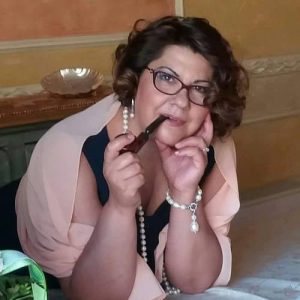
About IRIS CALIF-ISRAEL
Iris is an international writer, poet, dancer, editor and translator of poetry to Hebrew. She is in charge of foreign relations in the online culture, literature, art and poetry magazine “The Direction of the Holy Spirit Wind” (“Bekiovn Hroh”) a translator and an editor of world-wide poetry in the magazine and editor of international anthologies at the magazine, as well as in the culture and lifestyle magazine “Mokasini” and in the “World Poetry” section on the literature website “Rooms” (“Hadarim”). She is also a member of the Composers’ Association of Hebrew authors and publishers in Israel named “ACUM”.
Iris is received of the International Prize for Literature Italy – Milan 2024: ‘CITY OF GALATEO’ Special award for excellence ‘città del Galateo’ in the category of foreign writers from around the world, poetry and fiction on a free topic, for the poem she wrote “Angel of Life”.
Iris received the 2023 award for International Best Poets & POETS:
THE JOURNAL OF RENDITION OF INTERNATIONAL POETRY- IPTRC [Multilingual] CHINA and she was selected- to be one of the “20 Top International Journalists for the year 2024 of Legacy Crown’s” -ASIA. She also holds a diploma from the “Russian Professional Writers Union” and the international magazine “Arina NN”, registered in the Ministry of Culture of Russia, for her contribution to the culture world “International Poetic Community” 2022.
Iris is the head of the Israeli liaison department of the Hong Kong Literature and Arts Magazine and a member of the Association of artists and writers of the World SAPS. She takes part in the editorial board of the World Poetry Yearbook 2024 (English edition) and holds an honorary doctorate from the International Forum for Creativity, Humanity and Coexistence, Kingdom of Morocco.
Iris is a descendant of a lineage of Kabbalists, blessed with the prophecy of the spirit of the heart and the ability of communication and vision, which are expressed in her mystical and Kabbalistic writing, endowed with spiritual touches of holy upper and hidden worlds. For her, it is a blessing to shine with the spirit of the Jewish voice from the depths of love, life, and faith in the creator of the world- our father in heaven
“And as I soar with the flight of my spirit soul, I will carry the holy halo of the light of my Jewish loving voice, in the eternally world of the wings of the Dove of God spirit of the land-living peace”-Iris Calif
Three of Iris’s books have already been published: “In a Mysterious magical path Lolita breathes” (2001), “A Pure Wild moon” (2017), and “The daughter of God” (2020), and she is currently working on her fourth book. Her poems have been published and read on the radio, on television, on the internet, in national and international magazines and newspapers and in anthologies around the world, and were translated by international poets into numerous languages such as Spanish, Bengali, Nepali, Arabic, Chinese, Turkish, Assamese, Russian, Albanian and Italian.
Iris’s poems were presented in many prestigious and international exhibitions in Israel such as “Crowns of Winter” (January 2023), where a poem of hers translated into Bengali was displayed alongside poems by seven international poets, each translated and edited into Hebrew by her. Also the exhibition “Black-Red-White” displayed Iris’s translated versions of poems written by five international poets. Most recently, Iris’s poems, also translated into Chinese, Italian, Spanish and Arabic, were presented in the universal exhibition “Butterflies of Peace”, which also included the poems of 21 poets from around the world, translated by Iris into Hebrew.
Iris’s poetry reflects the inner journey of her soul, which looks through love, dreams of life and breathes holy and hidden worlds. Her poetry is a symbol and an expression of her victory over anorexia and her courageous decision to choose life and love.
“And in my living Iris soul, Irises of Blue heaven Sky
My spirit dances the living voice of the holy God life” – Iris Calif







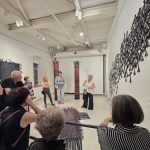
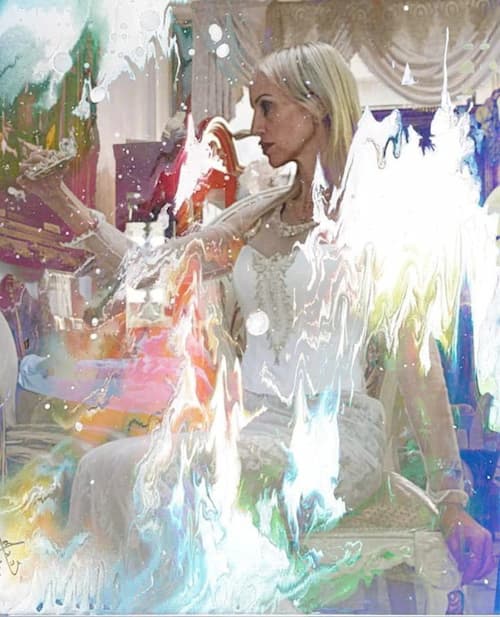
הוספת תגובה